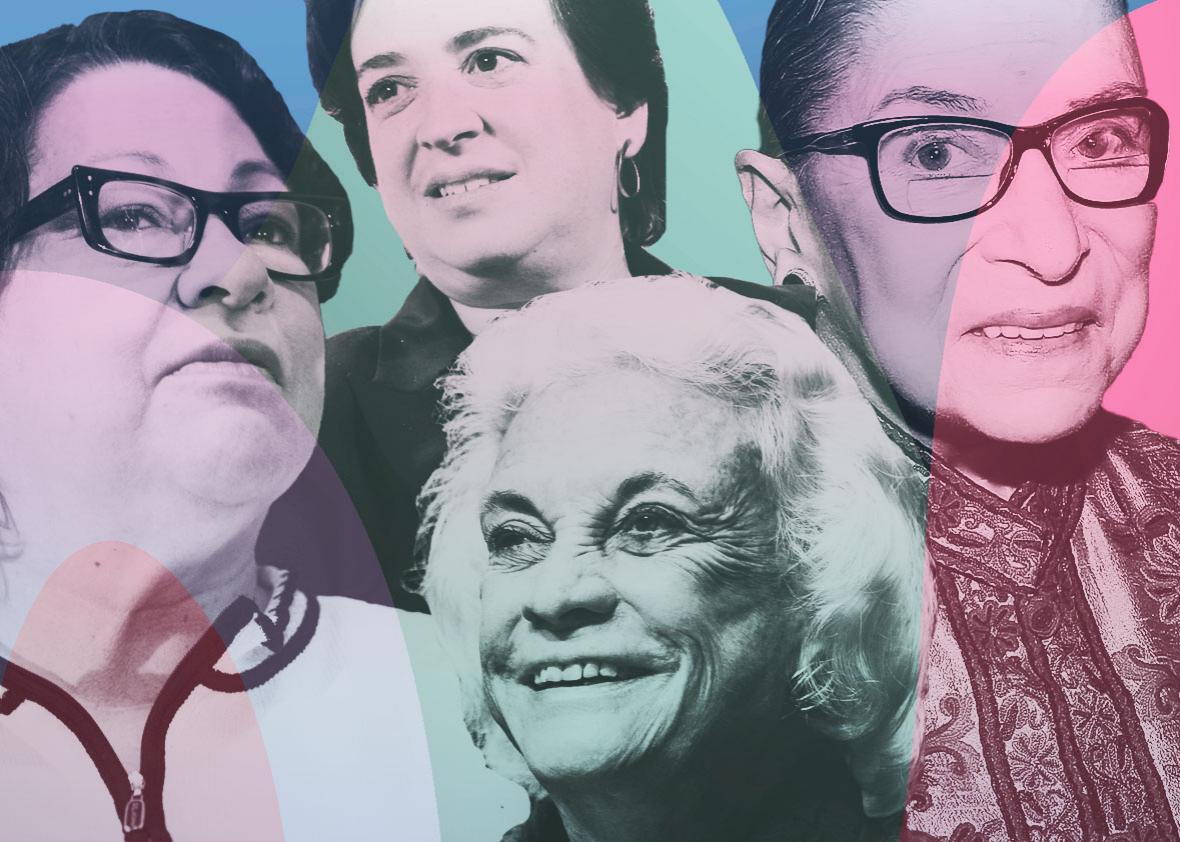For the many Americans who expected to see the last glass ceiling shattered last month, it’s been a painful few weeks of soul-searching and self-doubt. Many women who planned to bring their daughters to the inauguration must now patiently explain to them that a man who called women pigs and dogs and worse is their president, that this is not their time. Dismissals of race and gender equality as “identity politics” mean we have to apologize for even asking for a seat at the table. It will be a long four years.
But one of the benefits of watching as women have shattered glass ceilings at the Supreme Court in my own lifetime is that I can draw strength from the fact that women have undeniably elbowed their way into government in recent decades and that they aren’t going to slink off contritely just because Donald Trump finds them tedious. I’ve learned a tremendous amount watching the four women who have sat on the Supreme Court, which had been dominated by men for two centuries. They have taught me almost everything I know about women and power. Here’s what I think they have to tell us.
Sandra Day O’Connor famously had a cushion in her chambers hand-embroidered with the words “Maybe in error but never in doubt.” Of all the memorable qualities O’Connor modeled as the first female justice, to my mind the most crucial was her unwillingness to stew or fret over past mistakes or to become immobilized by fears that she didn’t know enough. O’Connor was often maddening for liberals because she evinced few regrets over her vote in Bush v. Gore, and she was often content to decide cases as if hers was the only worldview that mattered. But to me, O’Connor will always stand for the idea that when in doubt, don’t be in doubt. That’s a useful lesson for women pondering running for office, going to law school, or organizing a protest in the coming years.
Ruth Bader Ginsburg has the reputation of a raging firebrand. She isn’t. She’s a deliberate, careful, and meticulously overprepared lawyer who loses her cool only very rarely. Nobody understands better than the Notorious One that angry women have been known to frighten the people. And on the handful of occasions she has allowed herself to show real outrage in public life, it’s not because she has a temper. I have watched Ginsburg long enough to learn that years of sustained, sizzling outrage may be warranted but is also toxic. She picks her battles, she cherishes friendships and institutions, she deploys real frustration only infrequently, and she spends most of her time enjoying life. I spend enough time gorging myself on Pantsuit Nation and other secret women’s groups to understand that rage and fury may be appropriate, but they’re also exhausting. Ginsburg has taught me to be angry only rarely and to show it even less.
Sonia Sotomayor has used her time at the court to become what she has been dubbed by her admirers: the people’s justice. She throws out first pitches at ball games and presides over the ball drop in New York, and she wrote the most revealing and honest judicial memoir I have ever read. Her trick for managing racism and sexism seems to mirror that of Rep. John Lewis, who urges us to act as if the changes we seek are already in place. Despite being called out at her confirmation hearings as a racist and a sexist bully, Sotomayor smiled graciously, I suspect in no small measure because the gallery was filled with young Latina women who were willing to stand in long lines to watch their hero make history. Sotomayor has made race, including Black Lives Matter, visible to the high court, but she has also done more than any sitting justice to make the court visible to the rest of us. Most of what she does as a justice is predicated in the notion that she has already changed everything about race and gender in America, just by showing up. She has taught me that if you believe you’ve already made the change, it’s already happened.
Finally, Elena Kagan has taught me that one of the most important skills a woman can have in a position of power is her capacity to listen. Kagan, who is one of the justices who garners the least attention, is also the one who seems most interested in building bridges and understanding opposing arguments. She was famous for this quality in her time at Harvard Law School, and it was the quality President Obama sought out with her nomination. It is the reason she is such a compelling writer, and it may be the reason you don’t read about her as much as you should. Kagan teaches me that listening and understanding are as important as fighting, maybe more so. In her I see the possibilities of reason and persuasion in a world with unbridgeable gaps. American women are tired of explaining and explaining and explaining again why equal pay is important, or family leave, or birth control. I think they are tired of building bridges that seem to take them nowhere. To me, Kagan embodies the possibility of discourse and understanding. It helps that she is hilarious. I figure that if she can spend one more conference trying to build consensus, we’d better fall in line to do the same.
This has been one of the most difficult times I can recall for women in public office. It is shattering to contemplate starting again to relitigate fights over our bodies, access to contraception, equal pay, respect in the workplace, the right to love and marry the partner of our choosing, and the right to be unafraid of sexual violence and casual threats. We have a long climb ahead. We also have the accumulated lives and wisdom of four extraordinary women who did this climb before us and who will do it with us again.
